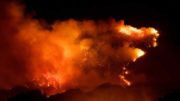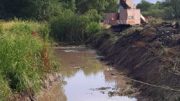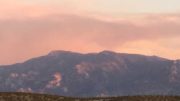Still active on all fronts
By Jon Johnson
MOUNT GRAHAM – The Frye Fire has grown to 17,330 acres and has remained active on all fronts assisted by blowing winds. That information has earned it the dubious distinction of currently being the largest active fire in the state.
As of Wednesday morning, 887 crew members are on scene fighting the fire. Areas previously that were not staffed, including the northern boarder of the western front, had crews being staged Wednesday, with Hot Shot crews seen heading down Tripp Canyon.
“They are putting crews in to monitor the situation and mop up anything that is still active,” Frye Fire Public Information Officer Cameron Eck said.
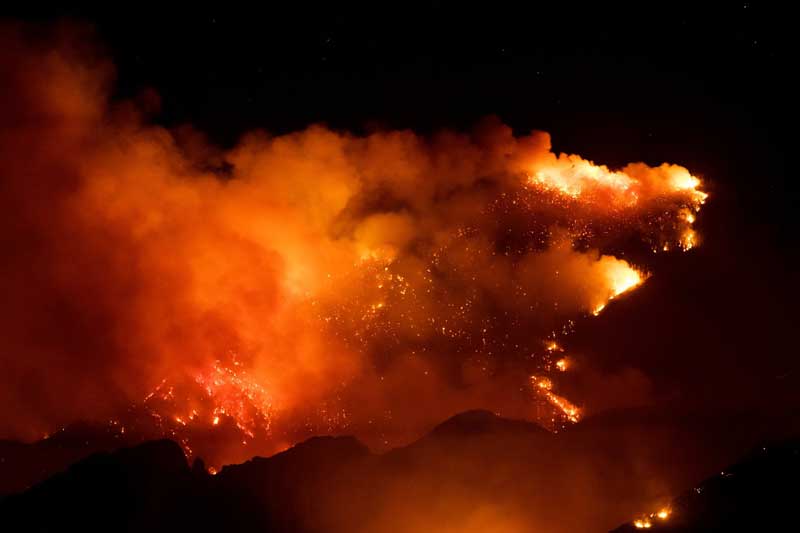
Contributed Photo/Courtesy Katie Cluff: The Frye Fire has engulfed more than 17,000 acres and continues to spread across Mount Graham.
According Eck, the main thrust of the fire has moved through the areas including the Mount Graham International Observatory, Bible Camp and cabins at Old Columbine, but no structures were lost. Some equipment may have suffered heat or smoke damage at the MGIO, but none had direct fire.
As previously reported by Gila Valley Central on Sunday, the MGIO escaped a close call with the fire as helicopter and fixed wing aircraft dumped water and fire retardant slurries to save the multimillion dollar facility from harm. The observatory had previously had all nonessential staff evacuated prior to the Sunday scare, but as the fire encroached to within 50 feet of the Vatican Advanced Technology Telescope, the rest of the crew were evacuated as well. Below is a time lapse video of the Frye Fire as back burning efforts are engaged around the MGIO. The video was taken by a camera on top of the Large Binocular Telescope.
While the main fire has moved through the area, firefighters remain at those sites to protect from any flare ups.
“Even though the fire moved through they are still very cautious because there is active fire surrounding those structures,” Eck said.

This view from the Large Binocular Telescope on Wednesday shows buildings at the MGIO drenched in fire retardant slurry.
The fire has moved past previous fire lines at Forest Road 366 and moved over to the other side of the mountain at Webb Peak. Firefighters are actively engaging the fire in that area to save additional assets.
A plan has also been put into action to save the cabins at Turkey Flat should the fire reach that area. The growth on the eastern flank had been stifled but flared up again due to the wind. The main ideas of fighting the fire there involves possible aerial ignition to fight fire with fire, back burning and slurry and water drops to try to stop it’s progression at Marijilda Canyon, if it continues east. The only firebreak left on the eastern side is Highway 366. While air operations have greatly helped battle the fire, their operation was limited the last couple days due to extreme temperature. The temperature gauge operating limit was set to 110 degrees, which has been reached in Safford on Monday and Tuesday and is forecasted to eclipse that mark the rest of the week until Saturday.
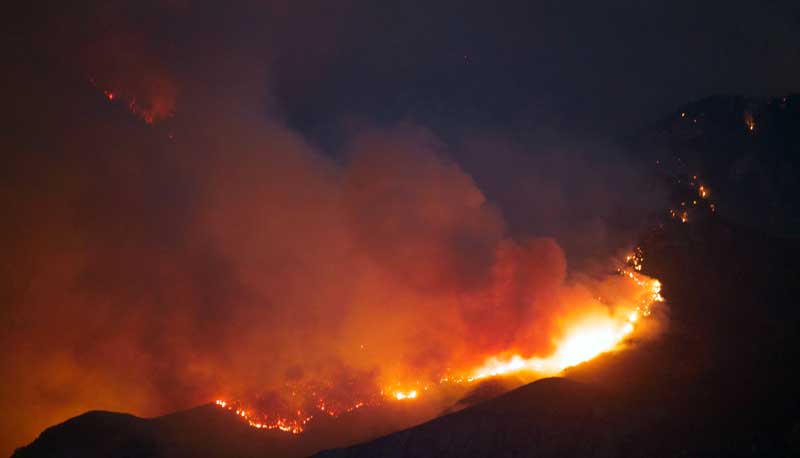
Jon Johnson Photo/Gila Valley Central: This image shows the fire’s progression up Webb Peak.
“Fire is a dynamic environment and so they are just assessing it each day,” Eck said.
At a public meeting on the fire Monday night, Southwest Area Incident Management Team Incident Commander Arthur Sinclair said fighting the fire was costing taxpayers roughly $1 million per day and that aside from a “season ending (weather) event” the fire will likely continue to consume the mountain. The official estimated containment day is still listed at July 30.
Eck said the firefighters were working diligently on the fire 24/7 and that safety to those battling the blaze was paramount.
“We’re doing everything we can,” Eck said. “Firefighter safety is our top priority.”
The Frye fire was started by lightning June 7 at 2:45 p.m.








